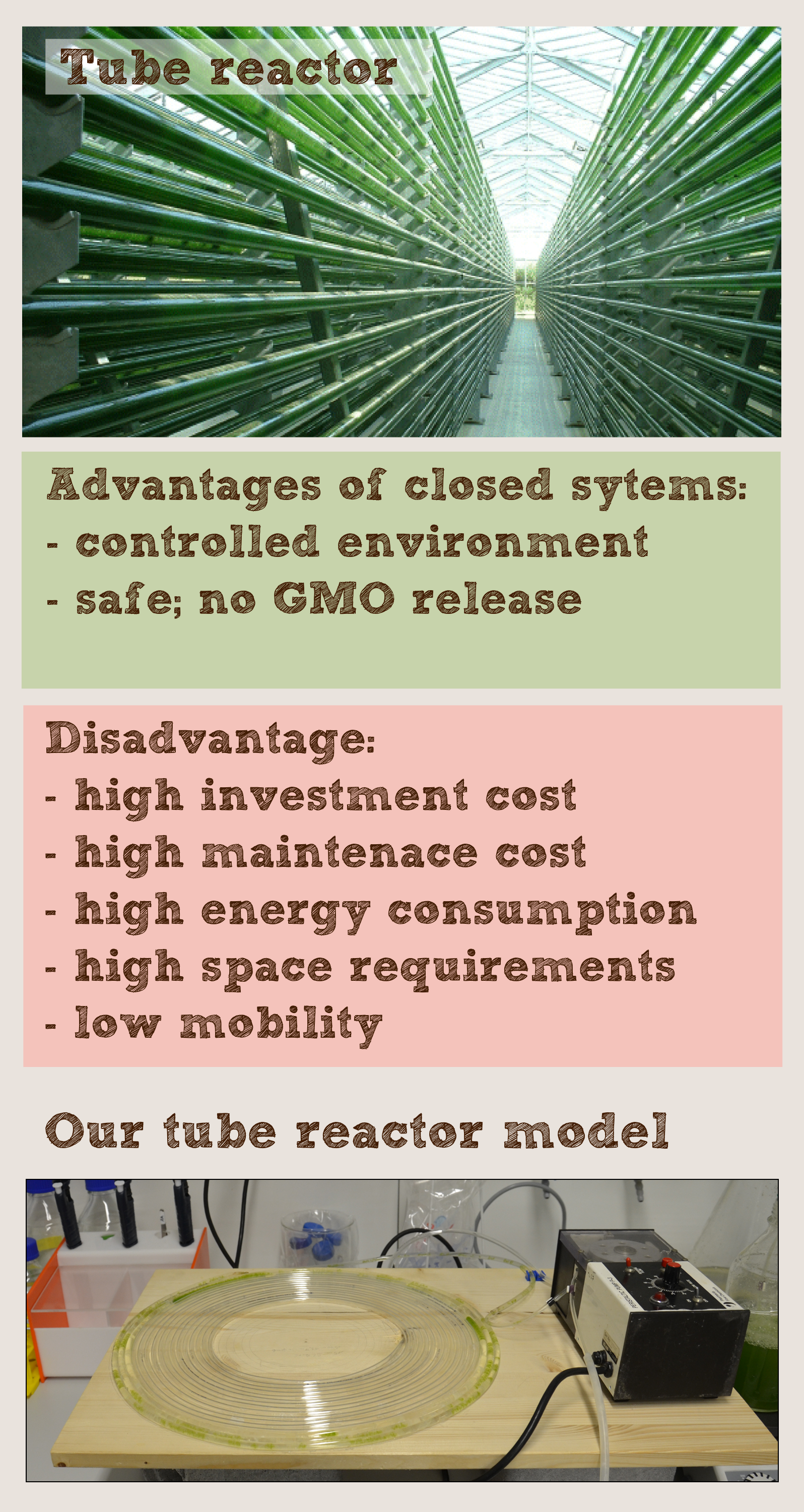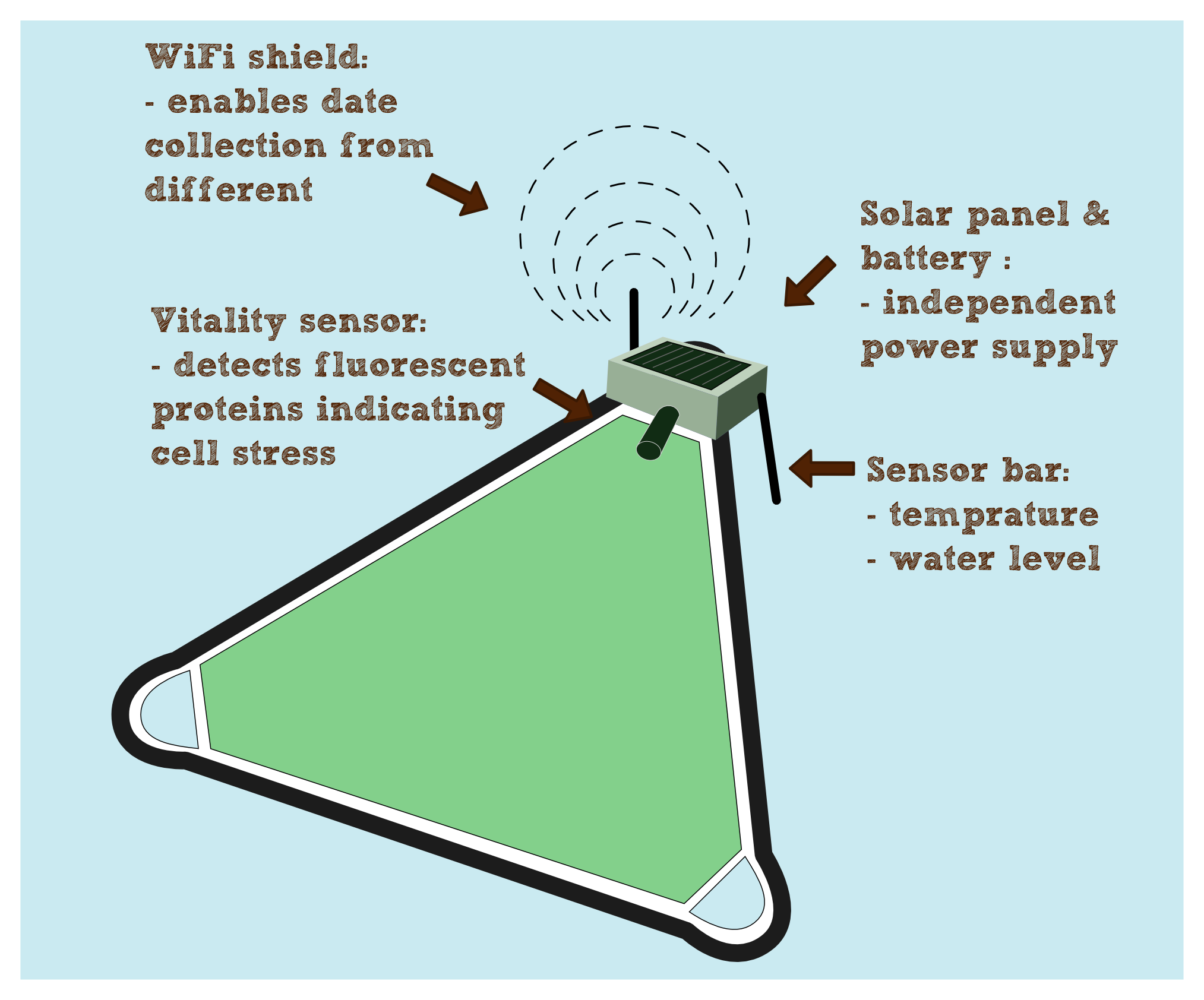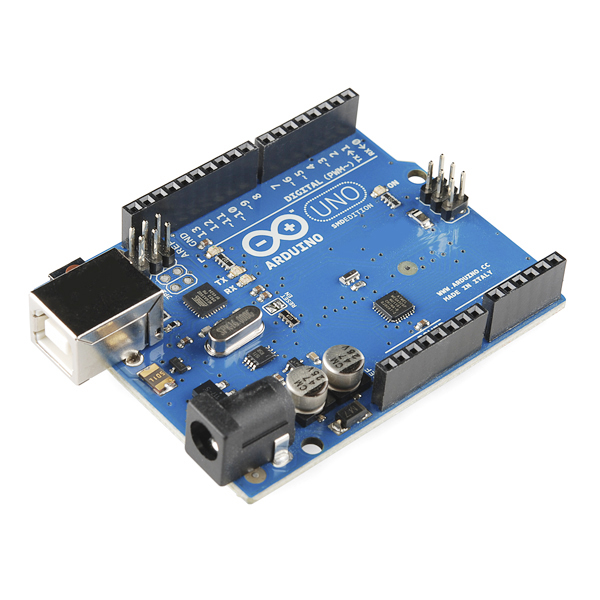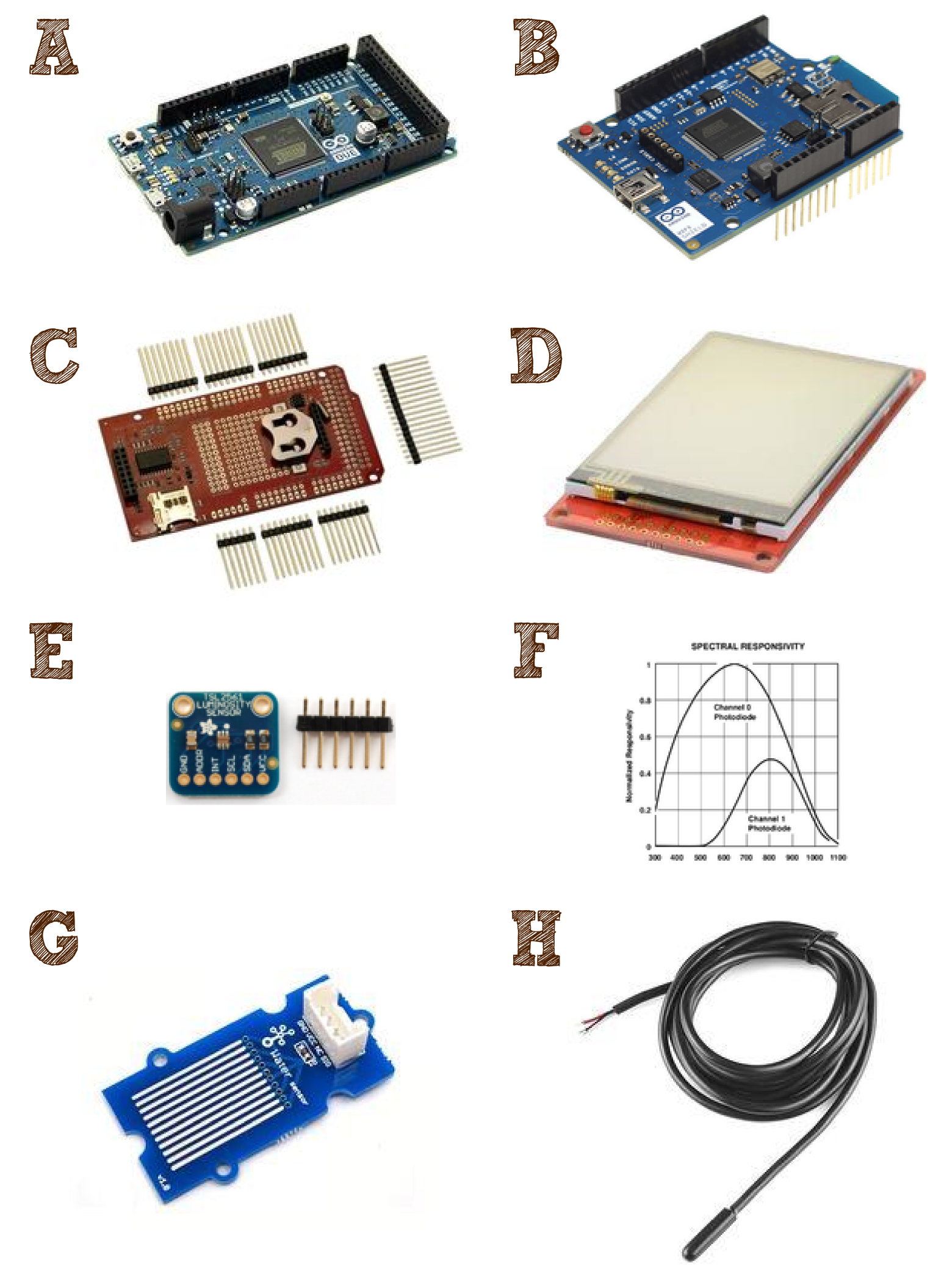Team:TU-Munich/Results/Implementation
From 2013.igem.org
Implementation of a Plant Biofilter
How does a biofilter look like? To face this question we considered the requirements for a moss filter and took a look at existing solutions. We talked to Prof. Dr.-Ing. Clemens Posten, who is head of the Institute of bioprocess engineering in Karlsruhe. So we were shown the institutes's bioreactors and Prof. Posten gave us an idea how a symbiosis between plant and technology can look like. Although his institute mainly works with algae, two solutions became apparent as sensible. The tube reactor mainly consists of glass tubes in which the plant is grown. The open pond model is a meander-shaped pond or slowly floating stream.
Our swimming PhyscoFilter Prototype pod
At least there are problems both reactor types don't solve. In both cases upscaling involves a great deal of expense. The tube reactor guarantees a big contact surface between water and moss which is an asset to the filter properties, but the carbon dioxide exchange is a major problem due to the lack of water-air through mix. To manage big scale filtering on an appropriate area it's inevitable to stack the tubes. That makes extra lighting necessary. The open pond model brings along a smaller water-moss surface, therefore the filter properties may suffer and a wider area is needed. As opposed to the tube reactor the costs are lower and there are no air exchange problems to face.
Slightly we return to the question how a biofilter could look like. It has to be a solution that can be implemented in any scale. The costs must be kept as low as possible. Additionally the energy consumption and maintenance must be kept to a absolute minimum to make it universally usable.
Such a solution has to be engineered cleverly. Robust to environmental influences, expendable, modular and handy, even when in use. It must provide an ideal environment for the moss to grow and set off an alert if such a setting is no longer provided.
Our answer to that is the PhyscoFilter pod.
It consists of a triangular shaped tube in which a felt cloth is stretched. As a float, the pod raises and falls with the water level, so the cloth is always kept on the water surface. Our experiments showed that felt is a very good matrix for the moss to grow on and its roots maintain stable on the fibers.
The light weight and handy size make it mobile and and transportable and a higher quantity of pods can easily arranged to a honeycombed structure. That makes pods are very applicable at any location. In ponds, lakes and rivers; any scale is thinkable.
Shopping for the pod
| Component | Quantity | Source | Price | Figure |
|---|---|---|---|---|
| Tubes | 3 | Building center | ||
| Connectors | 6 | Building center | ||
| Felt base | xx m3 | Building center |
Images from our trip to the construction center
Automatic monitoring of moss on a swimming pod by an Arduino Microcontroller
Introduction
One advantage of our pod is that it works quite autonomic. Once the moss is installed it filters until it's "saturated", assumed that the environmental parameters fit and a proper living space is provided. The main goal of our measurement device is to monitor these environmental parameters in real time. Since the filter's the costs should be kept as low as possible, the usage of ordinary lab measurement tools is limited. Looking one step ahead it is conceivable to use a moss-filter in order to clean ponds or streams etc. Places that are not continuously supervised by humans. So our aim was to engineer a low cost and low energy solution, that maintain the filters autonomy.
This is where Arduino comes into play. Arduino is a platform that is based on one microcontroller which is attached to a circuit board. Its convenient handling and easy programming, the lots of available hardware and the great community support make it one of the most popular prototyping platforms these days, especially for multidisciplinary applications. Among its many fans it already enjoys cult status. We first used the Arduino Uno. It is the most commonly used board. The first revision was released in September 2010. Designed for beginners, it gave us an easy start into the handling, since none of us had any experience working with microcontrollers. Most libraries already worked out of the box and all shields and sensors we ordered came with an example code. But the Arduino Uno came to it's limits, when we tried to get a display, WiFi and several sensors working.
Therefore we ordered the Arduino Due, which is the most powerful Arduino board at the moment. It has 16 times more flash memory (code storage) than the Arduino Uno and its clock runs 5 times faster. Instead of 2KB SRAM there are 96KB. At least there are a lot more free pins that can be used for sensors etc, and still its costs don't exceed 50€ (~60$).
We installed a solar powered Arduino on one edge of our pod in order to monitor the setting. A temperature and a light sensor collect weather data and a water sensor attached to the side of the pod registers, if the pod's tubes take on water and the pod lowers its height on the surface. For testing purposes we even attached a display. All collected data are sent via WiFi and stored at a server's MySQL database in real time. Alternatively the data can also be sent via GSM if there is no WiFi hotspot close by. All data can then easily be displayed.
The controller can easily be expended by other sensors, such as a color sensor to monitor the moss's health or a potential die off, a pH-Sensor or even a webcam.
Concerning the low costs, the unlimited capabilities and the handiness we highly recommend the use of the Arduino as measuring device. We have created a tutorial how to set up an Arduino Due with some basic functions.
| Component | Quantity | Source | Price | Figure |
|---|---|---|---|---|
| Arduino Due microcontroller | 1 | [http://www.watterott.com/de/Arduino-Due?xfb7d6=d868f3f07c538128ec6013c6d984b089 watterott] | 46.41 € | Fig. 1 A |
| Arduino WIFI Shield | 1 | sparkfun | 63.58 € | Fig. 1 B |
| Watterott mega msd-shield | 1 | [http://www.watterott.com/de/Arduino-Mega-mSD-Shield watterott] | 19.49 € | Fig. 1 C |
| Display MI0283QT-9 | 1 | [http://www.watterott.com/de/MI0283QT-2-Adapter watterott] | 36.00 € | Fig. 1 D |
| Light sensor TSL2561 | 1 | [http://www.watterott.com/de/TSL2561-Lichtsensor watterott] | 7.74 € | Fig. 1 E |
| Temperature sensor DS18B20 | 1 | [http://www.exp-tech.de/Sensoren/Sparkfun-Temperature-Sensor---Waterproof--DS18B20-.html exp-tech] | 8.80 € | Fig. 1 G |
| Water sensor | 1 | [http://www.exp-tech.de/Sensoren/Seeedstudio-Grove---Water-Sensor.html exp-tech] | 2.90 € | Fig. 1 H |
| Lithium-Battery | 1 | [http://www.amazon.com/s/ref=nb_sb_noss_1/176-6668907-5443152?url=search-alias%3Daps&field-keywords=lithium%20battery&sprefix=lithi%2Caps&rh=i%3Aaps%2Ck%3Alithium%20battery amazon] | 16.35 € | |
| Stackable Headers | 3 | [http://www.exp-tech.de/Zubehoer/Steckverbinder/Arduino-Stackable-Header-Kit.html exp-tech] | 5.37 € | |
| Linking wires and resistors | 1.00 € | |||
| Photo-diodes | 3 | |||
| 207.64 € | 280.77 $ |
How could it look installed in a river?
NY PARALLEL NETWORKS
Commercially available pods called "Kampen"
In the search for a possibility to built swimming pods for our moss filter we found [http://www.bestmann-green-systems.de BGS Ingenieurbiologie und -ökologie GmbH] which is a German company which developed and provides solutions for the revegetation of rivers and wetlands.
Swimming PhyscoFilter Pod in action
References:
http://www.ncbi.nlm.nih.gov/pubmed/6327079 Edens et al., 1984
- http://www.ncbi.nlm.nih.gov/pubmed/6327079 Edens et al., 1984 Edens, L., Bom, I., Ledeboer, A. M., Maat, J., Toonen, M. Y., Visser, C., and Verrips, C. T. (1984). Synthesis and processing of the plant protein thaumatin in yeast. Cell, 37(2):629–33.
 "
"




































AutoAnnotator:
Follow us:
Address:
iGEM Team TU-Munich
Emil-Erlenmeyer-Forum 5
85354 Freising, Germany
Email: igem@wzw.tum.de
Phone: +49 8161 71-4351